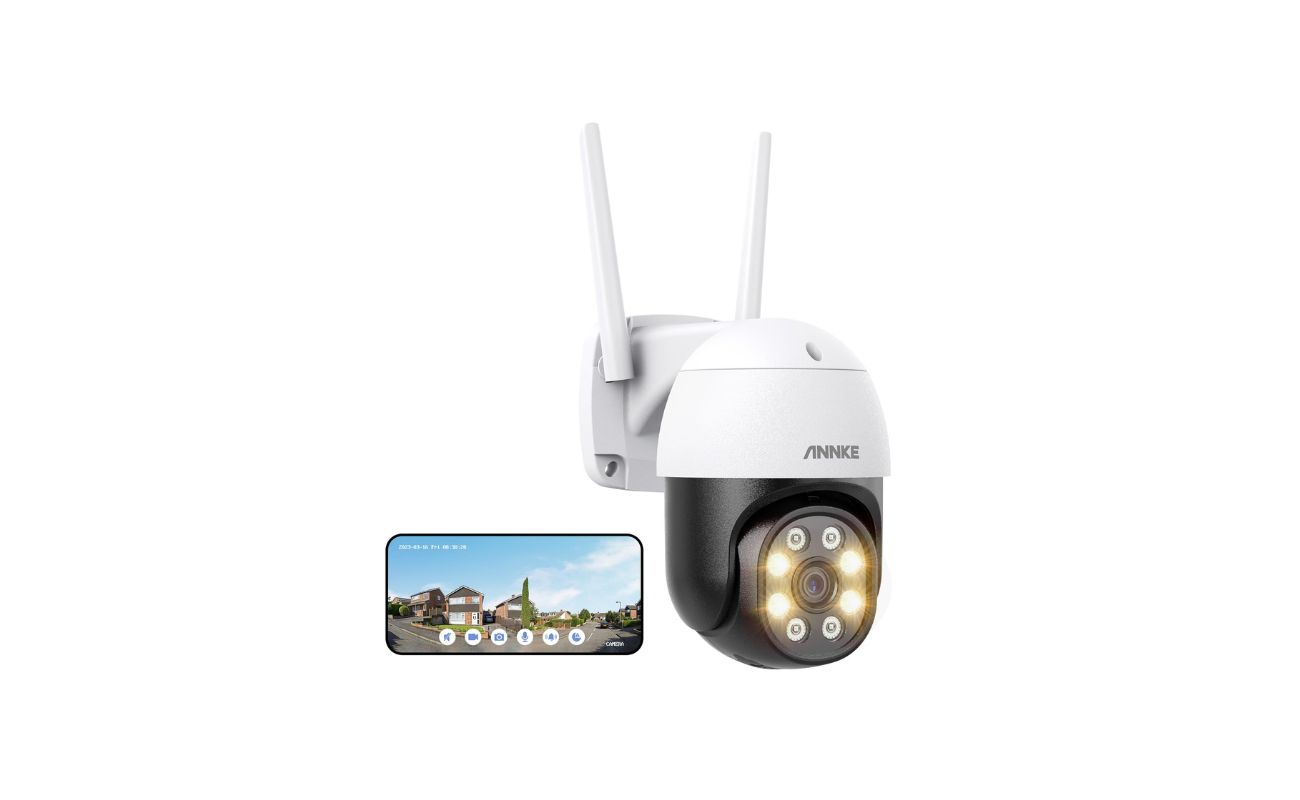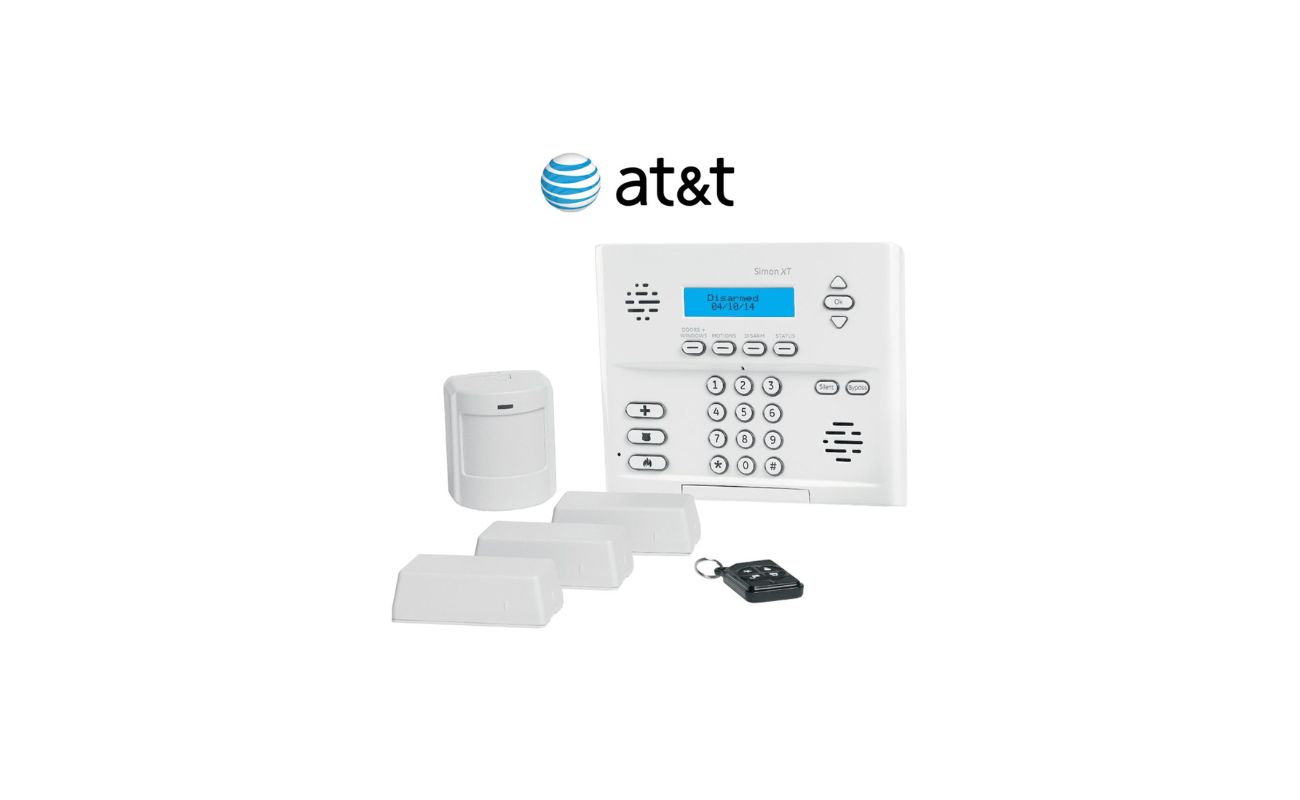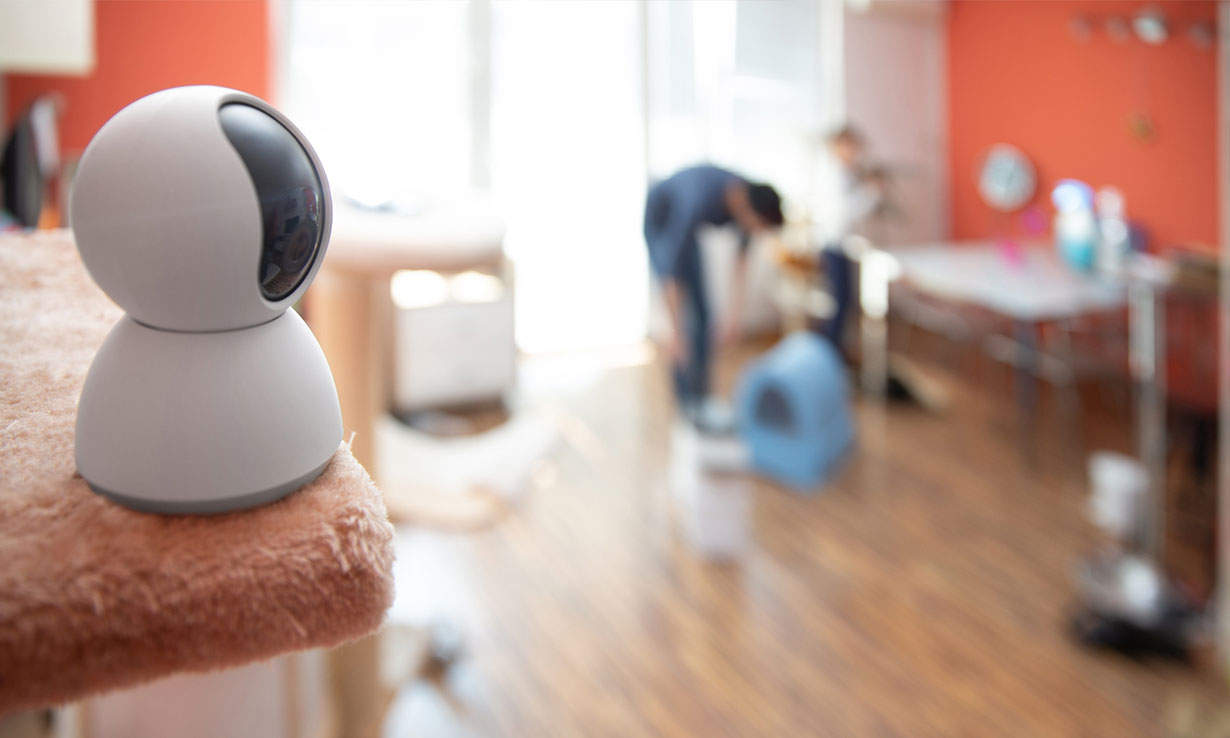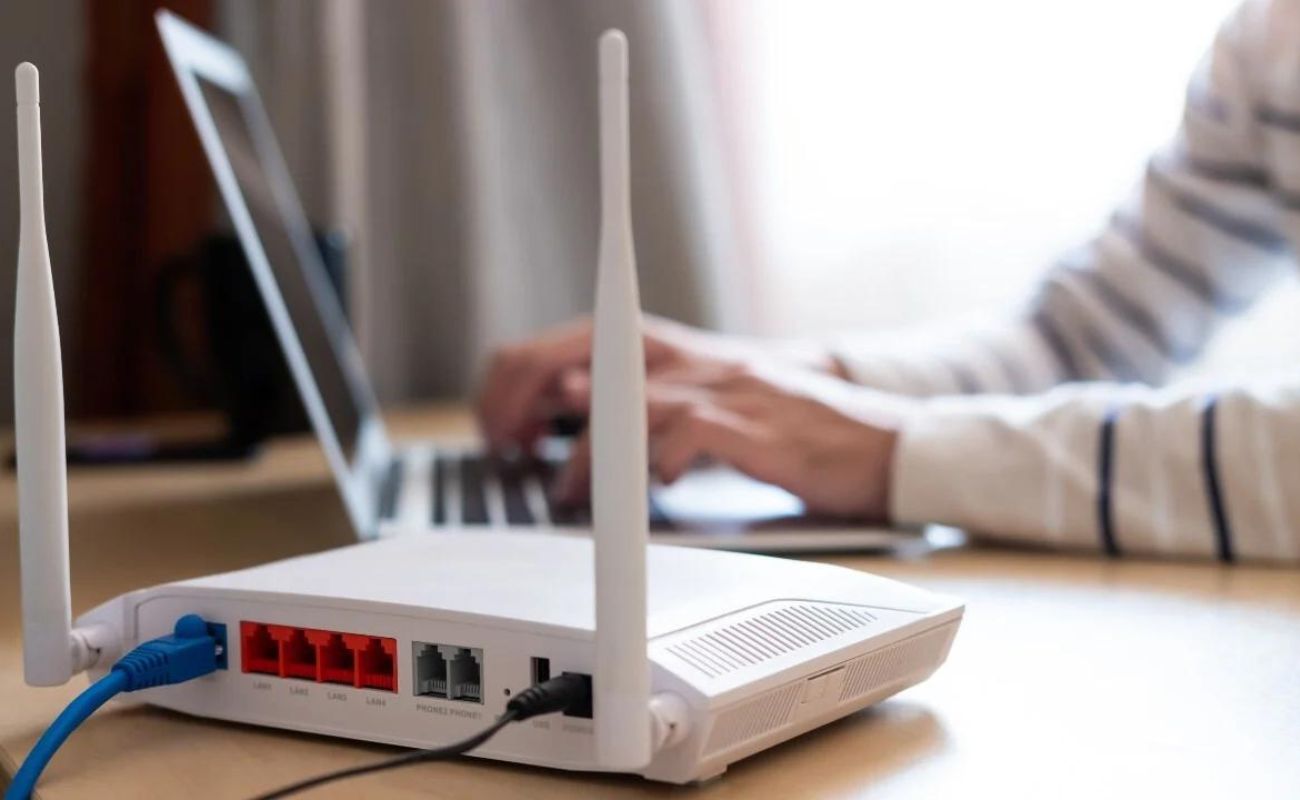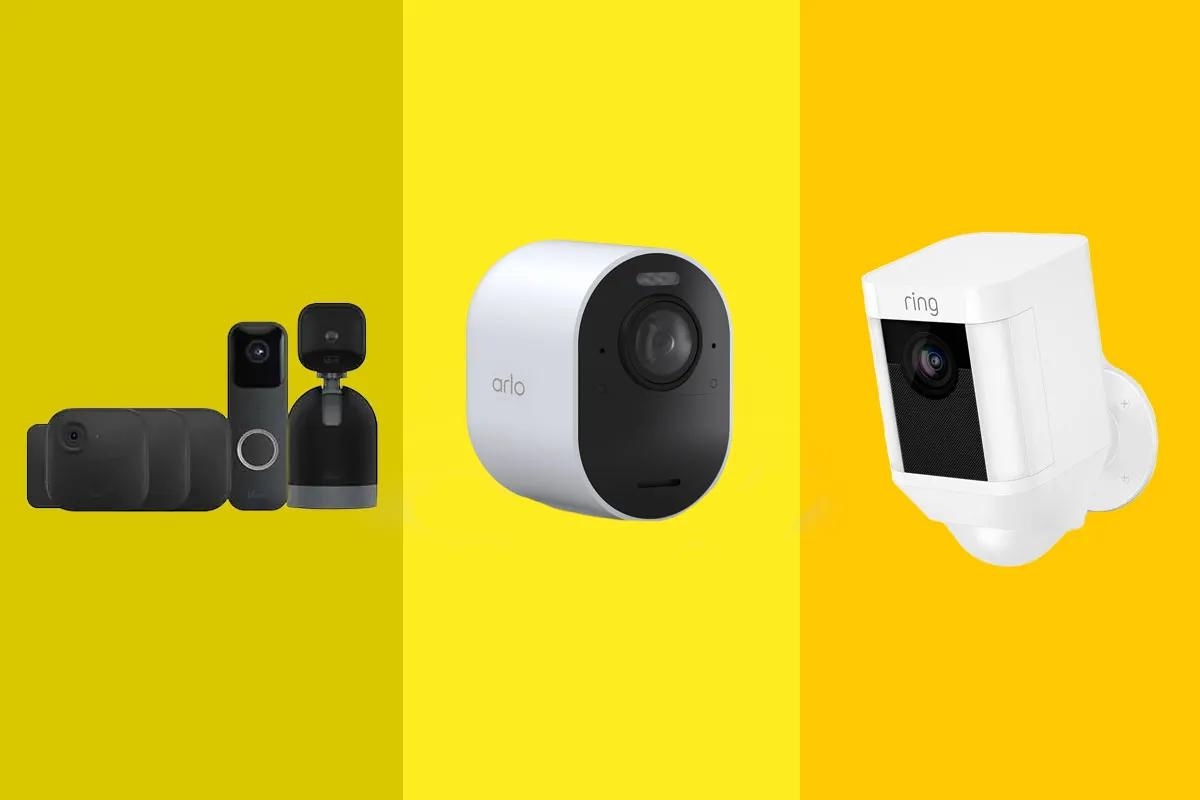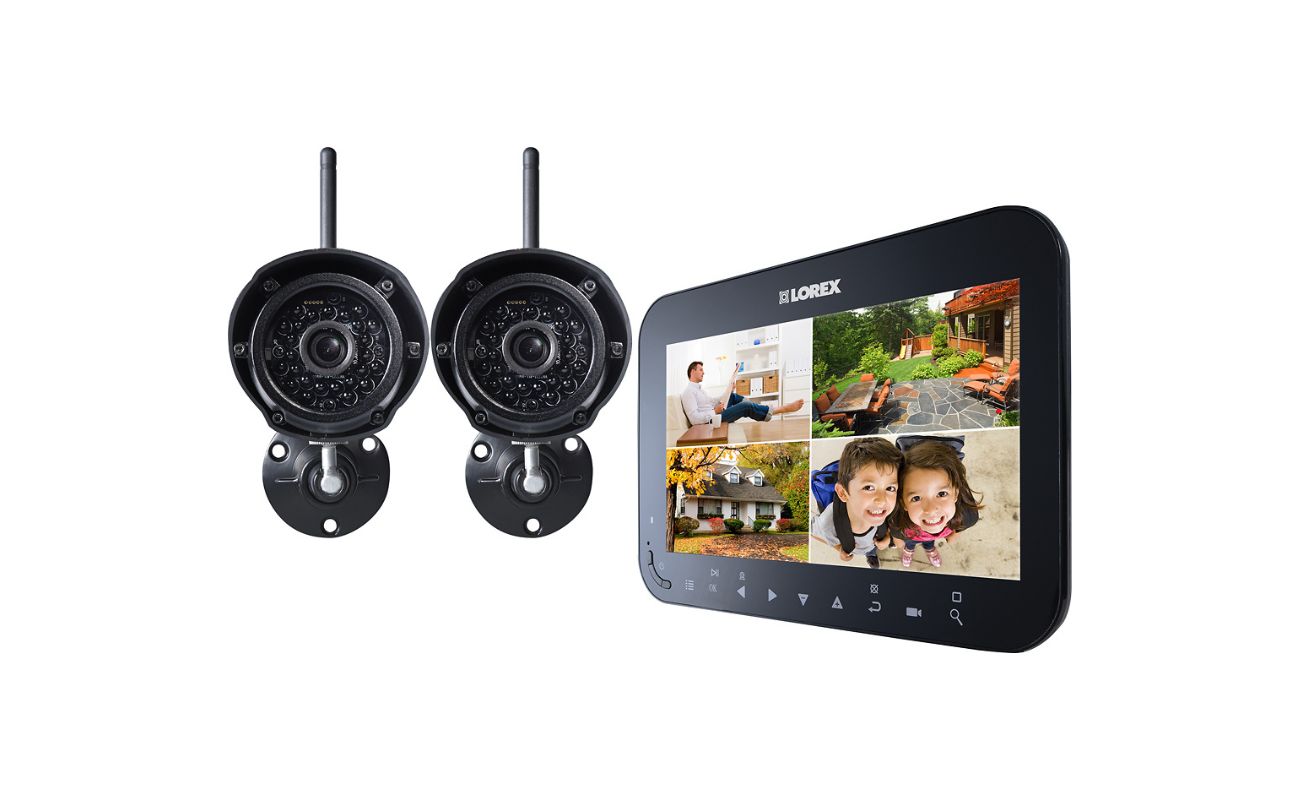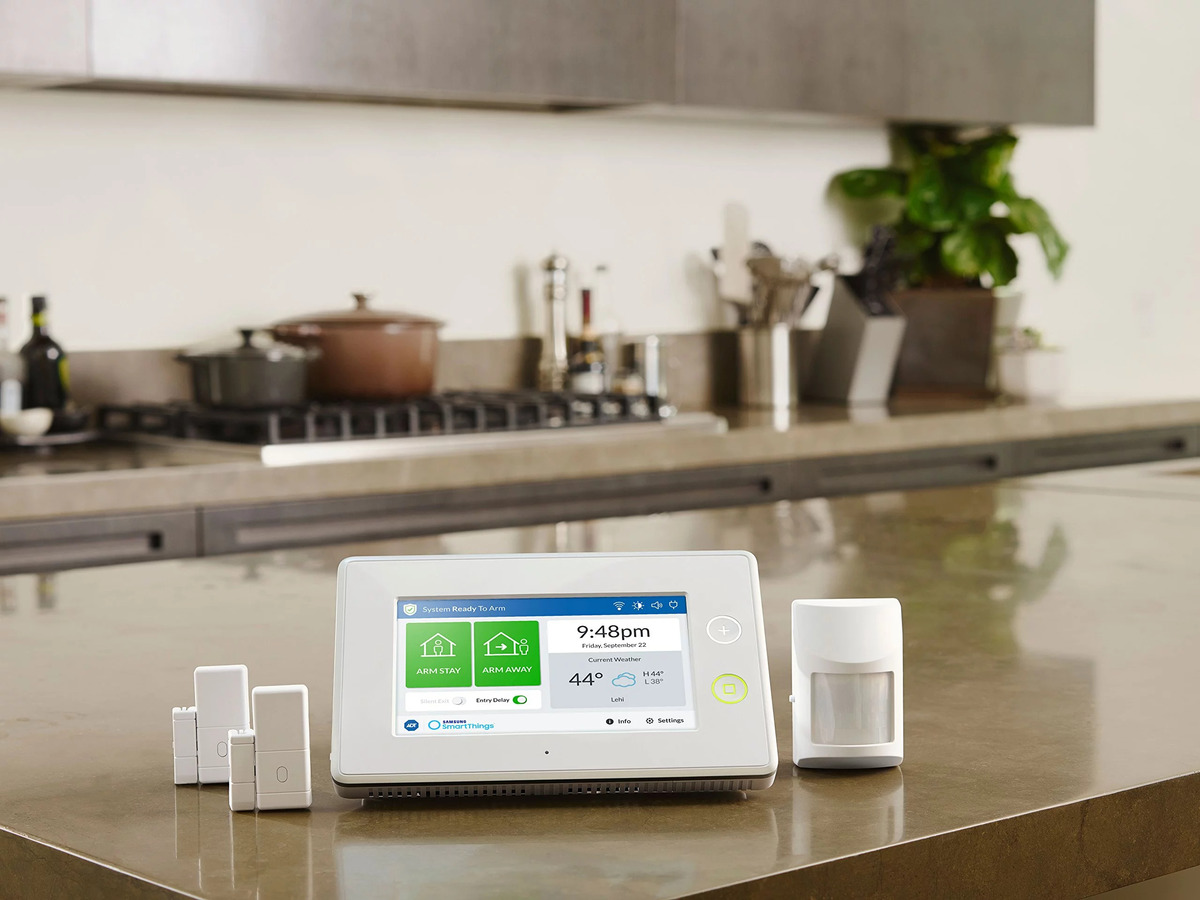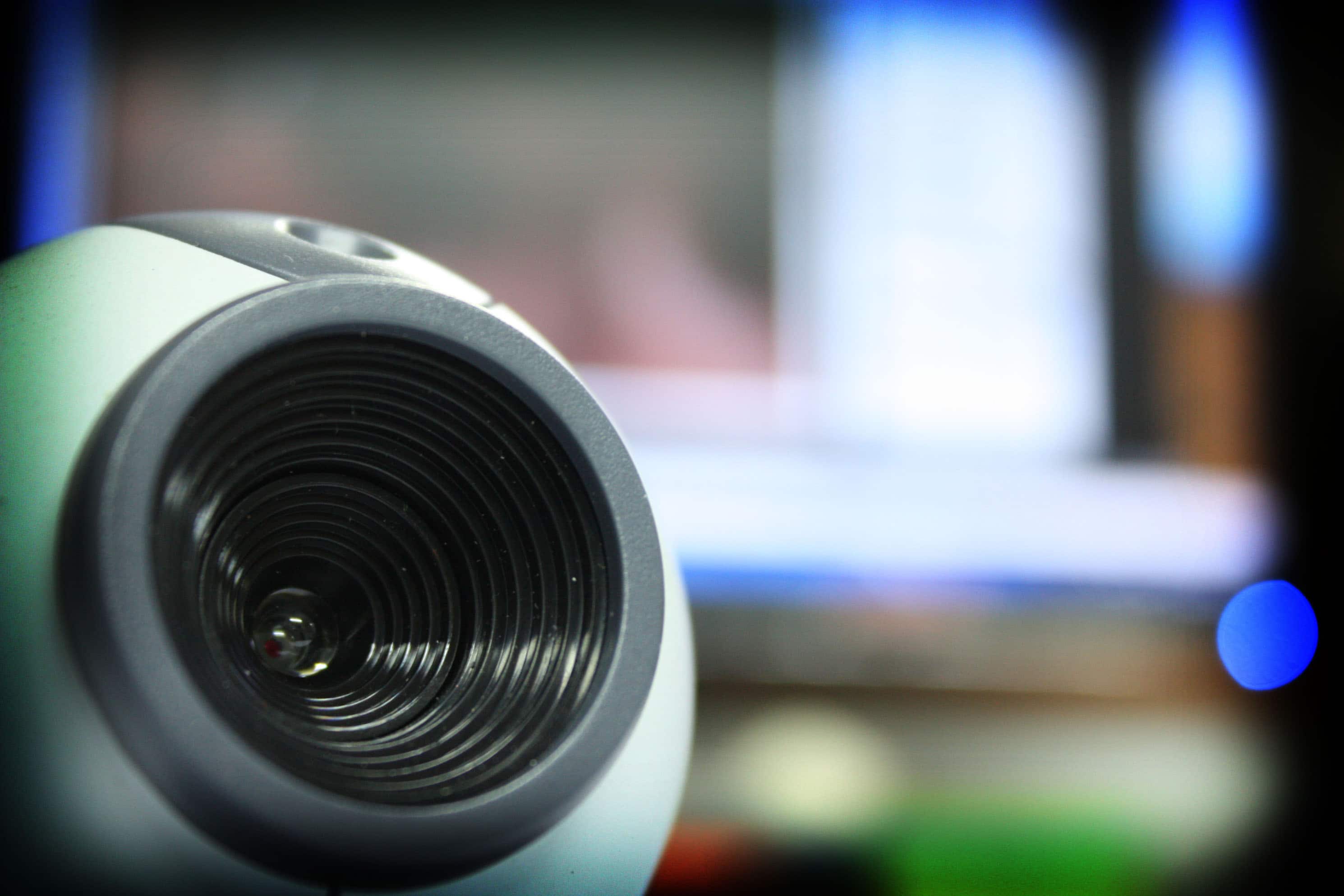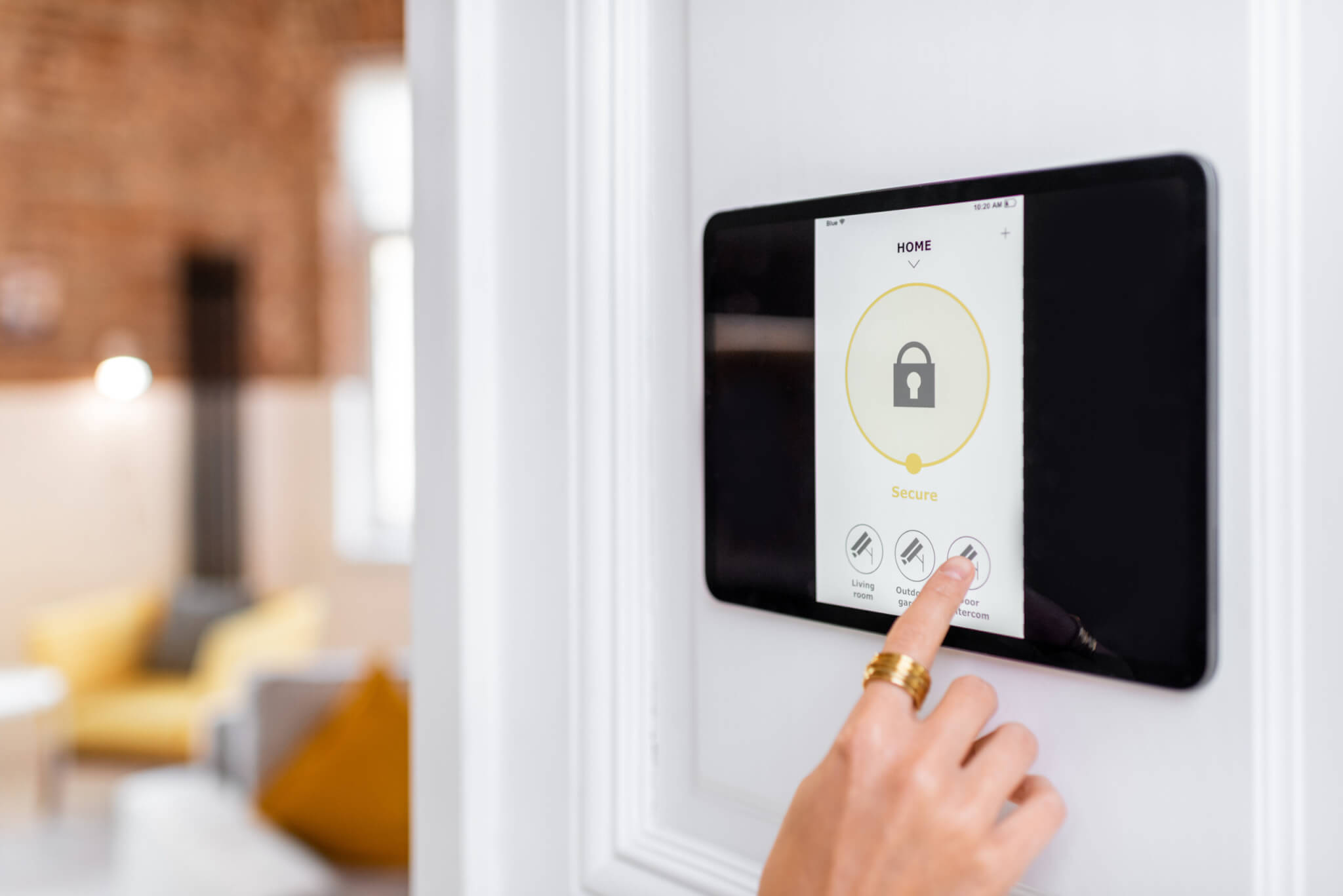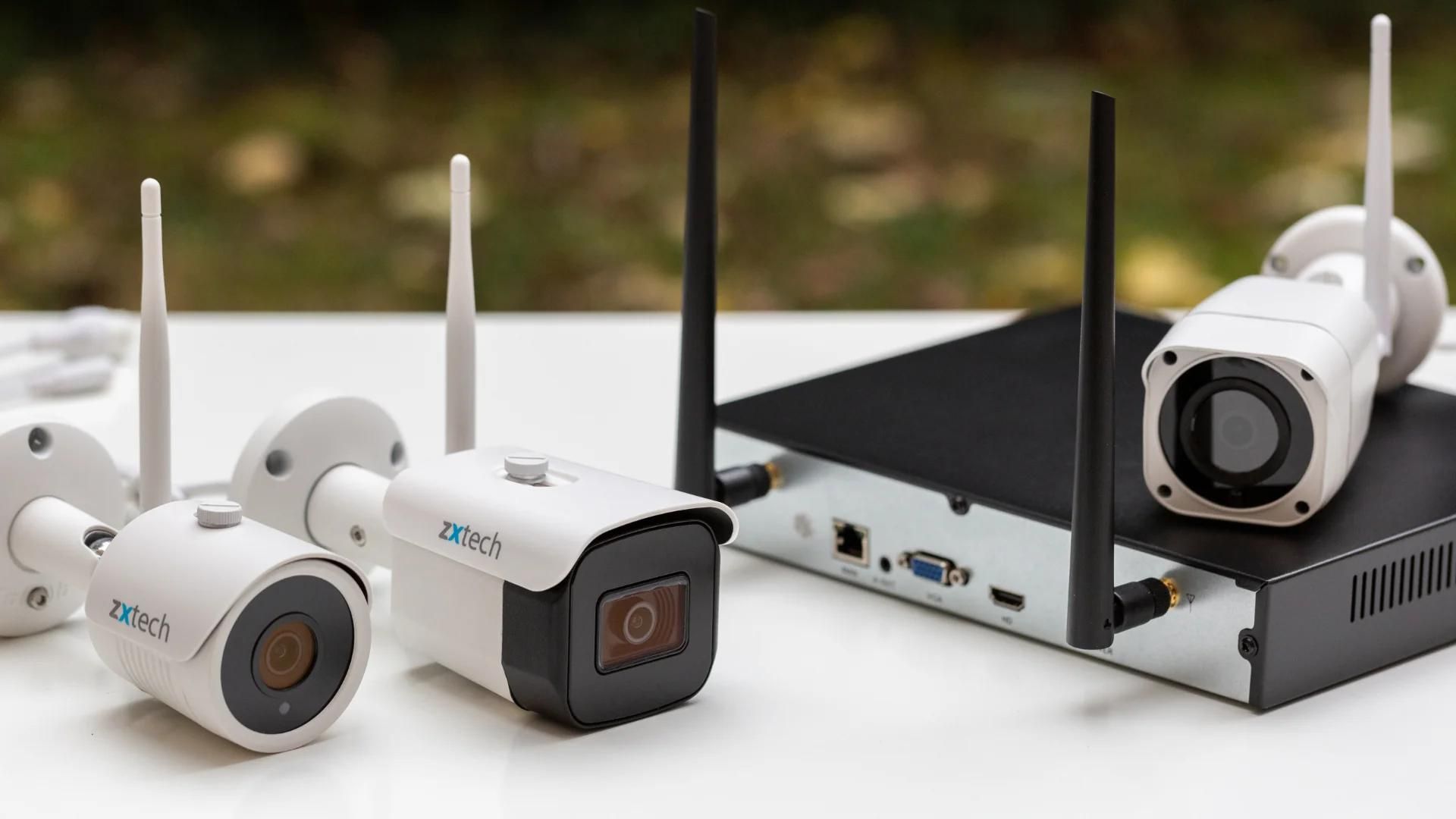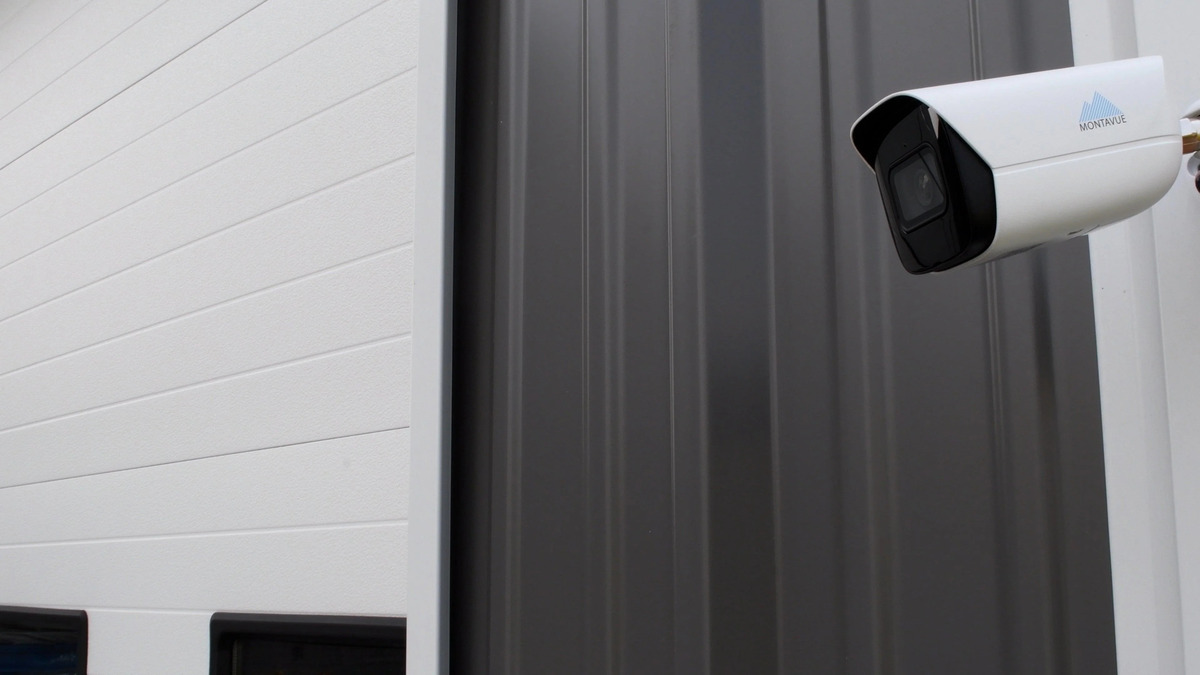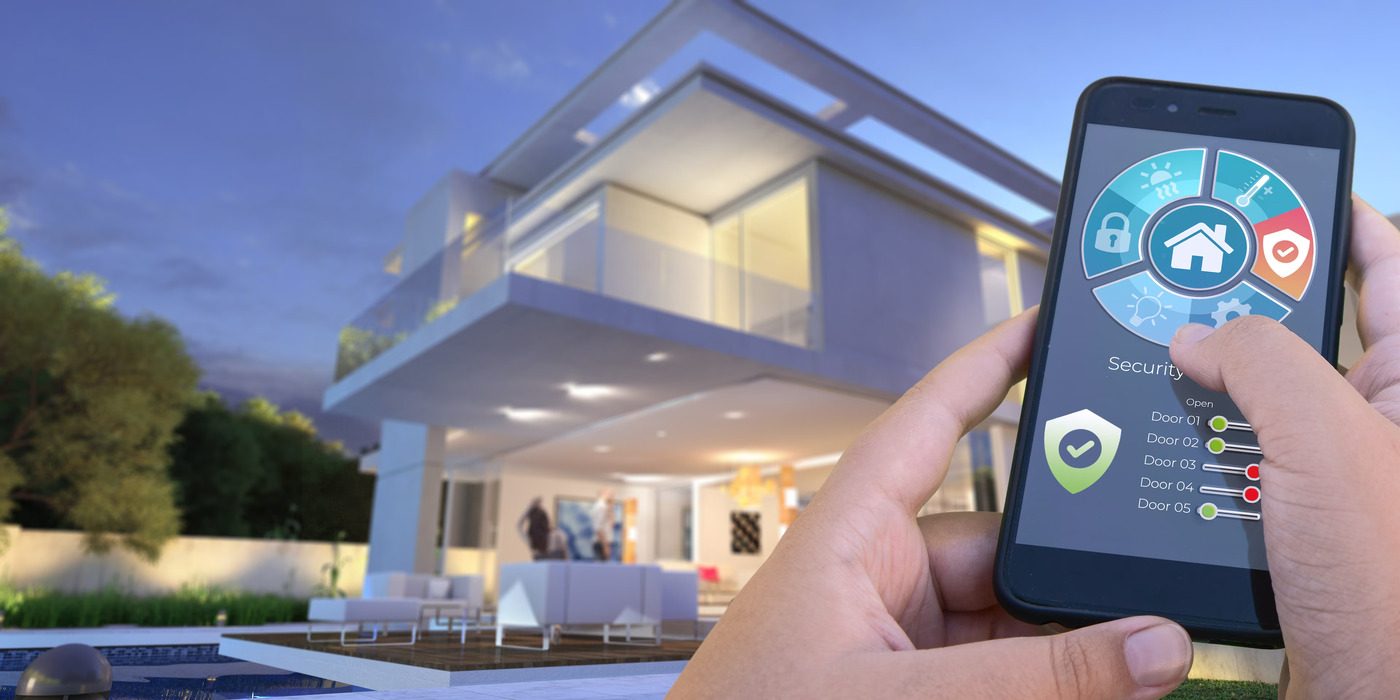Home>Home Security and Surveillance>What Was The Most Difficult Aspect Of Installing/Setting Up Your Smart Home Security Product(s)?
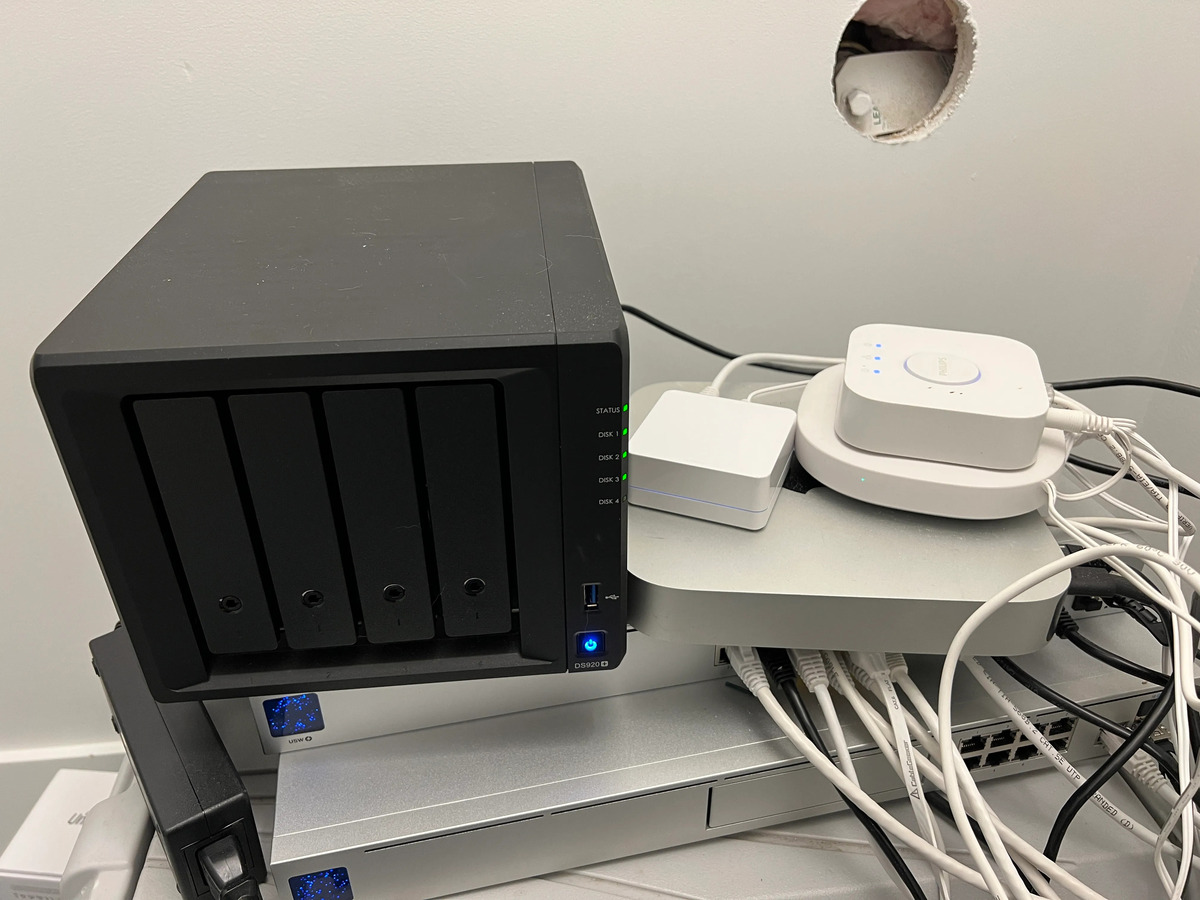

Home Security and Surveillance
What Was The Most Difficult Aspect Of Installing/Setting Up Your Smart Home Security Product(s)?
Modified: March 6, 2024
Discover the biggest challenges faced during the installation and setup of your smart home security products. Enhance your #HomeSecurity and surveillance experience with expert insights.
(Many of the links in this article redirect to a specific reviewed product. Your purchase of these products through affiliate links helps to generate commission for Storables.com, at no extra cost. Learn more)
Introduction
Setting up a smart home security system is an exciting endeavor that can bring peace of mind and convenience to homeowners. With the advancement of technology, home security products have become more feature-rich, allowing us to monitor and protect our homes with ease. However, the installation and setup process can sometimes present challenges that require patience and understanding.
In this article, we will discuss the most difficult aspects of installing and setting up smart home security products. Whether you are a DIY enthusiast or hiring a professional installer, it is essential to be aware of the potential hurdles you may encounter. By understanding these challenges, you can be better prepared to overcome them and ensure a successful installation of your smart home security system.
Key Takeaways:
- Choose smart home security products carefully based on needs, compatibility, and scalability. Research and compare brands, read reviews, and set a budget to make an informed decision.
- Properly configure and customize security features to optimize functionality. Stay informed about new technology, attend training sessions, and embrace updates for a secure and connected home.
Choosing the Right Smart Home Security Product(s)
When it comes to choosing the right smart home security product(s), the options can be overwhelming. There are various types of security devices available, such as video doorbells, security cameras, motion sensors, and smart locks, each with its own set of features and capabilities.
The first challenge in this process is understanding your specific needs and requirements. Do you need outdoor surveillance cameras to monitor the perimeter of your home? Are you looking for a comprehensive security system with professional monitoring? Do you want to integrate your security devices with other smart home products?
Once you have a clear idea of your needs, it is crucial to research and compare different brands and models. Look for reputable brands that prioritize security and offer reliable products. Read customer reviews and ratings to gauge the performance and satisfaction levels of other users.
Compatibility is another essential factor to consider. Ensure that the smart home security product(s) you choose are compatible with your existing devices and the smart home ecosystem you have or plan to build.
Additionally, consider the scalability of the system. Will you need to expand and add more devices in the future? Choosing a product line that allows for easy integration and expansion can save you time and money down the line.
Finally, set a budget for your smart home security system. While it is tempting to go for the latest and most advanced products, it is essential to find a balance between features and affordability. Determine a budget that aligns with your needs and explore products within that range.
By carefully considering your needs, researching different products, and comparing their features and compatibility, you can confidently choose the right smart home security product(s) that meet your requirements.
Understanding the Compatibility and Connectivity Requirements
One of the most crucial aspects of setting up a smart home security system is understanding the compatibility and connectivity requirements of your chosen devices. Ensuring that all components work together seamlessly is essential for a hassle-free installation and optimal performance.
Before purchasing any smart home security products, it is essential to check their compatibility with your existing devices and systems. Many security devices rely on Wi-Fi connectivity, so verifying that your home has a stable and reliable internet connection is paramount.
Some smart security products also require a hub or bridge to connect and communicate with other devices. Make sure to check if your chosen products require any additional hardware for their functionality and compatibility.
Moreover, consider the compatibility of the smart home security products with the platforms and ecosystems you use. For example, if you use Amazon Alexa or Google Assistant, ensure that the devices you choose are compatible and can be integrated into your existing smart home setup.
When it comes to connectivity, it is crucial to have a strong and stable Wi-Fi signal throughout your home. Poor Wi-Fi coverage can hinder the performance and reliability of your smart home security system. Consider investing in a Wi-Fi range extender or a mesh network system to ensure seamless connectivity throughout your home.
Additionally, some security devices may require a power source. Ensure that you have access to power outlets or consider battery-powered options if wiring is not feasible.
Lastly, remember to keep firmware and software updates in mind. It is essential to regularly update the firmware and software of your smart home security devices to ensure the latest security patches and feature enhancements.
By understanding and addressing the compatibility and connectivity requirements of your smart home security devices, you can set yourself up for a successful installation and optimize the performance and functionality of your system.
Initial Configuration and Setup Process
Once you have selected the right smart home security product(s) and taken care of compatibility and connectivity, it’s time to move on to the initial configuration and setup process. This step is crucial in ensuring that your devices are properly installed and functioning as intended.
The first step is to carefully read the product manuals and installation guides provided by the manufacturer. These resources contain detailed instructions specific to your devices and can guide you through the setup process.
Next, gather all the necessary tools and equipment that may be required for installation. This could include screwdrivers, drills, mounting brackets, and any additional hardware or accessories that came with your devices.
Ensure that you have a secure and stable mounting location for your security cameras or sensors. This may involve drilling holes or using adhesive mounts, depending on the type of device you have chosen. Take into consideration the optimal placement for maximum coverage and effectiveness.
During the initial setup, it is essential to connect your devices to the designated mobile app or software provided by the manufacturer. This will allow you to control and monitor your smart home security system from your smartphone or computer.
Follow the on-screen prompts within the app or software to configure your devices. This may include connecting to your home Wi-Fi network, creating user accounts, and setting up security preferences such as motion sensitivity or notification settings.
Some devices may require additional steps, such as linking them to a central hub or syncing them with other smart home devices. Carefully follow the manufacturer’s instructions to ensure proper integration and functionality.
Once the initial configuration is complete, test your devices to ensure they are working properly. Walk through your home to check the coverage and range of your security cameras or sensors. Test the functionality of door locks or alarms to ensure they are responding as expected.
If you encounter any issues during the setup process, refer to the troubleshooting section of the product manual or seek assistance from the manufacturer’s support team.
By following the proper configuration and setup process, you can ensure that your smart home security devices are installed correctly and ready to provide you with the protection and peace of mind you desire.
Dealing with Network and Wi-Fi Issues
One of the common challenges when setting up a smart home security system is dealing with network and Wi-Fi issues. A stable and reliable internet connection is crucial for the seamless operation of your devices and ensuring smooth communication between them.
If you are experiencing network or Wi-Fi issues during the setup process, here are some steps you can take to address them:
- Check your Wi-Fi signal: Ensure that your Wi-Fi signal is strong and stable throughout the area where your devices are installed. If you notice weak signal areas, consider adding Wi-Fi range extenders or upgrading your router to improve coverage.
- Move devices closer to the router: If possible, temporarily move your devices closer to the Wi-Fi router during the setup process. This can help troubleshoot connection issues and ensure a reliable connection between your devices and the network.
- Reset and reboot devices: Sometimes, resetting your smart home security devices and rebooting your router can resolve network connectivity problems. Refer to the manufacturer’s instructions on how to perform a reset or reboot.
- Update firmware and software: Ensure that your smart home security devices are running the latest firmware or software versions. Manufacturers often release updates that can improve connectivity and address known issues.
- Change Wi-Fi channel: If you experience interference from other devices or neighboring networks, changing the Wi-Fi channel on your router to a less congested one can help improve signal quality.
- Adjust router settings: Check your router settings and ensure that features like Quality of Service (QoS) and port forwarding are properly configured to prioritize and optimize traffic for your smart home security devices.
- Consider a mesh network: If you have a large home or are facing significant Wi-Fi coverage issues, consider investing in a mesh network system. Mesh systems use multiple nodes to create a unified network with seamless coverage, eliminating Wi-Fi dead zones.
If you have tried these troubleshooting steps and are still experiencing network or Wi-Fi issues, it may be helpful to consult your internet service provider or the manufacturer’s support team for further assistance.
By addressing network and Wi-Fi issues promptly and effectively, you can ensure a stable and reliable connection for your smart home security system, enhancing its overall performance and functionality.
Integrating with Existing Smart Home Ecosystem
Integrating your smart home security system with your existing smart home ecosystem is a crucial step in creating a seamless and connected home automation experience. By connecting your security devices with other smart devices and platforms, you can enhance the functionality and convenience of your entire smart home setup.
Here are some key considerations for integrating your smart home security system:
- Compatibility: Ensure that your security devices are compatible with the smart home platform or hub you are using. Check if they support popular platforms such as Amazon Alexa, Google Assistant, Apple HomeKit, or Samsung SmartThings. This compatibility will allow you to control and monitor your security devices using voice commands or through a centralized smart home app.
- Linking devices: Follow the manufacturer’s instructions to link your smart home security devices with your existing smart home ecosystem. This may involve scanning QR codes, entering codes, or using the manufacturer’s app to establish the connection.
- Creating automation routines: Once your devices are integrated, you can create automation routines that tie your security devices with other smart home devices. For example, you can set up a routine that turns on the lights and activates your security cameras when the front door sensor detects motion at night.
- Smart home scenes: Take advantage of smart home scenes to create customized settings for different scenarios. For instance, you can have a “Goodnight” scene that arms your security system, turns off the lights, and adjusts the thermostat to your preferred sleeping temperature.
- Smart home routines: Use smart home routines to automate various actions based on specific triggers. For example, you can create a routine that automatically locks all doors and activates your security system when you leave home.
- Notification and alert settings: Ensure that notifications and alerts from your security devices are configured to work seamlessly with your smart home ecosystem. This way, you can receive alerts on your mobile device or through your smart speakers when there is a security breach or suspicious activity.
- Third-party integrations: Explore the possibility of integrating your smart home security system with other third-party apps or devices. This can allow you to extend the functionality of your security system and integrate it with services like home automation, energy management, or voice assistants.
By integrating your smart home security system with your existing smart home ecosystem, you can create a cohesive and intelligent home automation setup. This integration enables you to control and monitor your security devices effortlessly and enhances the overall functionality and convenience of your smart home.
When installing a smart home security product, make sure to carefully read the instructions and take your time to set it up properly. Rushing through the process can lead to mistakes and difficulties down the line.
Troubleshooting Common Installation Problems
During the installation and setup process of your smart home security system, you may encounter certain common problems that can hinder the smooth operation of your devices. Here are some troubleshooting tips to help you overcome these challenges:
- Device not connecting to Wi-Fi: If your device is not connecting to your Wi-Fi network, double-check the Wi-Fi credentials you entered during setup. Ensure that you are using the correct password and that your network is functioning properly. Try restarting your device and router, and if the problem persists, check for any firmware updates for your device that may address connectivity issues.
- Intermittent connection or dropped signals: If you experience intermittent connection or dropped signals, it may be due to wireless interference. Move your device closer to the router, reduce the distance between devices or consider adding Wi-Fi range extenders to improve signal strength. Also, make sure your devices are not placed near other electronics or appliances that could interfere with the wireless signal.
- False alarms: False alarms can be frustrating. Adjust the sensitivity settings of your motion sensors or door/window sensors to minimize false triggers. Ensure that sensors are properly positioned and not affected by sources of movement or drafts.
- Camera footage issues: If you are experiencing issues with camera footage, check the camera’s power source, connections, and positioning. Ensure your camera is not obstructed by objects or debris that may affect visibility or trigger false motion detection. Additionally, confirm that you have sufficient storage space for recording and check for any software updates for your camera.
- Unresponsive devices: If a device becomes unresponsive, try resetting it according to the manufacturer’s instructions. Check if the power source is functioning correctly and ensure the device is within range of your Wi-Fi network. If the problem persists, reach out to the manufacturer’s support team for further assistance.
- Poor video quality: If you are experiencing poor video quality from your cameras, ensure that your camera lenses are clean and free from dirt or smudges. Check your internet connection speed and bandwidth to ensure they meet the minimum requirements for high-quality video streaming. Consider upgrading your internet plan if necessary.
If you have exhausted these troubleshooting steps and are still experiencing issues, it may be beneficial to consult the manufacturer’s support team or seek professional assistance for further troubleshooting and resolution.
By addressing and resolving common installation problems promptly and effectively, you can ensure the optimal performance and functionality of your smart home security system.
Ensuring Proper Placement and Mounting
Proper placement and mounting of your smart home security devices are essential for optimal coverage and effectiveness. Whether you are installing security cameras, motion sensors, or door/window sensors, here are some important considerations:
- Strategic camera placement: When installing security cameras, choose locations that provide a clear view of the area you want to monitor. Consider potential blind spots, vulnerable entry points, and areas of high activity. Mount cameras at a height that captures facial features and other identifying details.
- Outdoor cameras: For outdoor cameras, ensure they are weatherproof and designed to withstand harsh conditions. Mount them in a way that prevents tampering or theft. Consider using camera mounts that offer tilt and swivel capabilities for flexible adjustment.
- Motion sensor placement: Motion sensors should be strategically placed to cover high-traffic areas, points of entry, and vulnerable areas. Avoid placing them near sources of heat or vents that could trigger false alarms. Position them at a height that captures movement effectively.
- Door/window sensor placement: When mounting door/window sensors, ensure they are properly aligned to detect movement when doors or windows are opened or closed. Test the sensors after installation to ensure they respond accurately to these movements.
- Consider lighting conditions: Take into account different lighting conditions when positioning your devices. Ensure cameras have adequate lighting or night vision capabilities for clear visibility in low-light or nighttime situations.
- Hide wiring: If your devices require wiring, find ways to conceal or hide the wires to maintain a neat and tidy appearance. Use cable clips or conduit to secure and organize the wires along walls or ceilings.
- Use mounting brackets and hardware: Follow the manufacturer’s guidelines for using proper mounting brackets and hardware. Securely fasten devices to ensure stability and prevent them from being easily tampered with or knocked out of position.
- Test device range: Once devices are mounted, test their range and performance by activating alarms, triggering motion sensors, or opening doors and windows. Make any necessary adjustments to ensure devices are detecting movements and events accurately.
- Consider power source: Check the power source requirements for your devices. Ensure that power outlets are available for devices that need a direct power source, or consider battery-operated options if wiring is not feasible in certain areas.
Take your time during the placement and mounting process to ensure that your devices are positioned correctly and securely. Test the functionality of each device after installation to ensure they are operating as intended.
By ensuring proper placement and mounting of your smart home security devices, you can maximize their effectiveness and provide enhanced protection for your home and loved ones.
Setting Up User Access and Permissions
Setting up user access and permissions for your smart home security system is crucial for maintaining control over who can access and manage your devices. Whether you have family members, housemates, or trusted guests, it is important to establish different levels of access to protect your privacy and security.
Here are some key steps to consider when setting up user access and permissions:
- Create user accounts: Begin by creating individual user accounts for each person who will have access to your smart home security system. This ensures that each user has a unique login and allows you to control their access privileges.
- Set up administrator account: As the owner of the smart home security system, set up an administrator account for yourself. This account will have full access and control over all devices and settings.
- Establish user roles: Determine the different roles and responsibilities for each user. For example, you may have an administrator who can manage all settings, a guest who has limited access, or a child who can only control certain devices.
- Assign permissions: Assign permissions to each user based on their role. Decide what actions each user can perform, which devices they can control, and what information they can access. For example, an administrator may have the ability to arm and disarm the security system, while a guest may only have access to view live camera feeds.
- Enable multi-factor authentication: Enhance the security of user accounts by enabling multi-factor authentication. This adds an extra layer of protection by requiring users to provide additional verification, such as a code sent to their mobile device, in addition to their login credentials.
- Manage access levels: Regularly review and update user access levels as needed. If someone no longer requires access or if new users need to be added, adjust the permissions accordingly to ensure that only authorized individuals have control over your smart home security system.
- Communicate guidelines: Clearly communicate the guidelines and expectations for using the smart home security system to all users. Emphasize the importance of not sharing login credentials and the responsibility of respecting privacy and security measures.
- Educate users: Ensure that all users are familiar with the basic functionality and operation of the devices they have access to. Provide training or informational resources to help them understand how to use the system effectively and responsibly.
By setting up user access and permissions for your smart home security system, you can maintain control over who can manage your devices and ensure that each user has appropriate access based on their role and responsibilities. This helps protect your privacy, security, and the integrity of your smart home ecosystem.
Read more: What Is A Smart Home Security System
Configuring and Customizing Security Features
Configuring and customizing the security features of your smart home security system is an important step to tailor the system to your specific needs and preferences. By adjusting settings and customizing features, you can optimize the functionality and effectiveness of your security devices. Here are some key considerations when configuring and customizing your security features:
- Alarm settings: Adjust the settings for your alarm system to meet your requirements. This may include setting the alarm volume, duration, and entry/exit delay times. Customize the alarm sound to be easily recognizable and distinct.
- Notification preferences: Set up notification preferences to receive alerts when specific events occur. Determine how and where you want to be notified – through push notifications on your mobile device, emails, or text messages. Specify the types of events you want to be alerted about, such as motion detection, door/window opening, or tampering.
- Activity zones: Many security cameras allow you to define specific activity zones to focus on areas of interest, such as entryways or high-traffic areas. Customize these zones to reduce false alarms and ensure that the camera captures the most crucial activity.
- Video recording settings: Adjust the video recording settings for your security cameras. Determine the resolution and video quality based on your storage capacity and internet bandwidth. You may also set specific timeframes for continuous recording or enable event-triggered recording.
- Scheduling: Utilize scheduling features to automate your security system based on your regular routines. Set specific times for arming or disarming the system, turning on or off specific sensors, or enabling certain security features.
- Integration with other devices: Take advantage of integrations with other smart home devices to enhance your security system. For example, sync your security cameras with your smart lighting system to have lights automatically turn on when motion is detected, creating the illusion of an occupied home.
- Privacy settings: Review and adjust privacy settings to protect your personal information and ensure that your security system is compliant with data privacy regulations. Consider enabling features such as automatic camera shuttering, geofencing, or privacy mode to limit recording and monitoring when you or authorized users are at home.
- Access control: Customize access control settings to determine who can arm or disarm the security system. This helps prevent unauthorized individuals from manipulating the system or disabling essential security features.
- Emergency contacts: Set up emergency contacts in your security system settings. Provide contact information for trusted individuals who will be notified in case of an emergency, such as a break-in or fire.
Take the time to explore the settings and customization options available for your smart home security system. By configuring and customizing the security features, you can fine-tune the functionality to align with your specific security needs and preferences.
Learning and Adapting to New Technology
As technology continues to evolve, staying updated and adapting to new advancements in smart home security is crucial. Learning and adjusting to new technology can help you maximize the benefits of your security system and ensure that you are utilizing the latest features and capabilities. Here are some key aspects to consider when it comes to learning and adapting to new technology:
- Stay informed: Keep yourself informed about the latest trends and developments in smart home security. Follow technology blogs, subscribe to newsletters, and stay active in online forums or communities to stay up to date with the latest innovations and advancements.
- Read product documentation: When you purchase new security devices or software updates become available, take the time to read the product documentation and release notes. These resources provide important information about new features, enhancements, and any changes that may impact the way your system operates.
- Attend training sessions or webinars: Manufacturers often offer training sessions or webinars to educate users about new features and functionalities. Take advantage of these opportunities to enhance your understanding of your smart home security system and explore ways to utilize it effectively.
- Experiment and explore: Don’t be afraid to experiment and explore the features and settings of your smart home security system. Familiarize yourself with the user interface and try different configurations to see how they impact the performance and functionality of your devices.
- Utilize user manuals and online resources: User manuals, online guides, and support forums are valuable sources of information when it comes to learning about new technology. Refer to these resources if you encounter any issues or if you want to learn more about specific features and settings.
- Share knowledge and experiences: Engage with other smart home security enthusiasts or homeowners who have similar systems. Share knowledge and experiences, exchange tips and tricks, and learn from each other’s insights to expand your understanding and make the most of your technology.
- Embrace updates and upgrades: Regularly update your smart home security system with the latest firmware or software upgrades. These updates often include bug fixes, performance improvements, and new features that can enhance the overall functionality and security of your system.
- Stay security conscious: As you adapt to new technology, it is crucial to stay security conscious. Ensure that you follow best practices for keeping your devices secure, such as regularly changing passwords, enabling two-factor authentication, and keeping the firmware and software up to date.
- Stay patient and open-minded: Learning and adapting to new technology may require some patience and an open mind. Be willing to explore new functionalities, learn from any challenges or mistakes along the way, and remain adaptable as you navigate the ever-changing landscape of smart home security.
By embracing the process of learning and adapting to new technology, you can make the most of your smart home security system and stay current with the advancements that enhance the safety and convenience of your home.
Conclusion
Setting up a smart home security system can bring a new level of convenience, control, and peace of mind to homeowners. However, the installation and setup process can pose challenges that require patience, research, and troubleshooting. By understanding and preparing for the difficulties that may arise, you can overcome them and ensure a successful installation.
In this article, we discussed various aspects of installing and setting up a smart home security system. From choosing the right products and understanding compatibility and connectivity requirements to configuring security features and adapting to new technology, each step plays a crucial role in creating a robust and efficient security system.
Proper placement and mounting of devices, addressing network and Wi-Fi issues, integrating with existing smart home ecosystems, and setting up user access and permissions are essential when it comes to maximizing the functionality and effectiveness of your smart home security system.
It’s also important to remember that learning and adapting to new technology is an ongoing process. Staying informed, exploring features, and embracing updates are key to staying current and harnessing the full potential of your security system.
By patiently addressing common installation problems, customizing the settings to align with your specific needs, and actively engaging with the smart home security community, you can create a connected and secure home environment.
Ultimately, a well-installed and properly configured smart home security system provides you with the peace of mind knowing that your home and loved ones are protected. Embrace the challenges, stay proactive in troubleshooting, and enjoy the benefits of a secure and smart home.
Frequently Asked Questions about What Was The Most Difficult Aspect Of Installing/Setting Up Your Smart Home Security Product(s)?
Was this page helpful?
At Storables.com, we guarantee accurate and reliable information. Our content, validated by Expert Board Contributors, is crafted following stringent Editorial Policies. We're committed to providing you with well-researched, expert-backed insights for all your informational needs.
